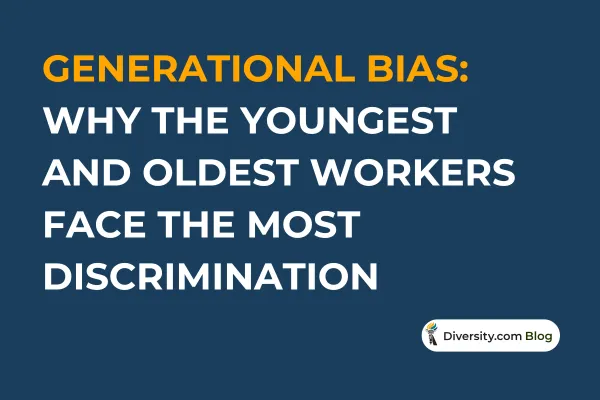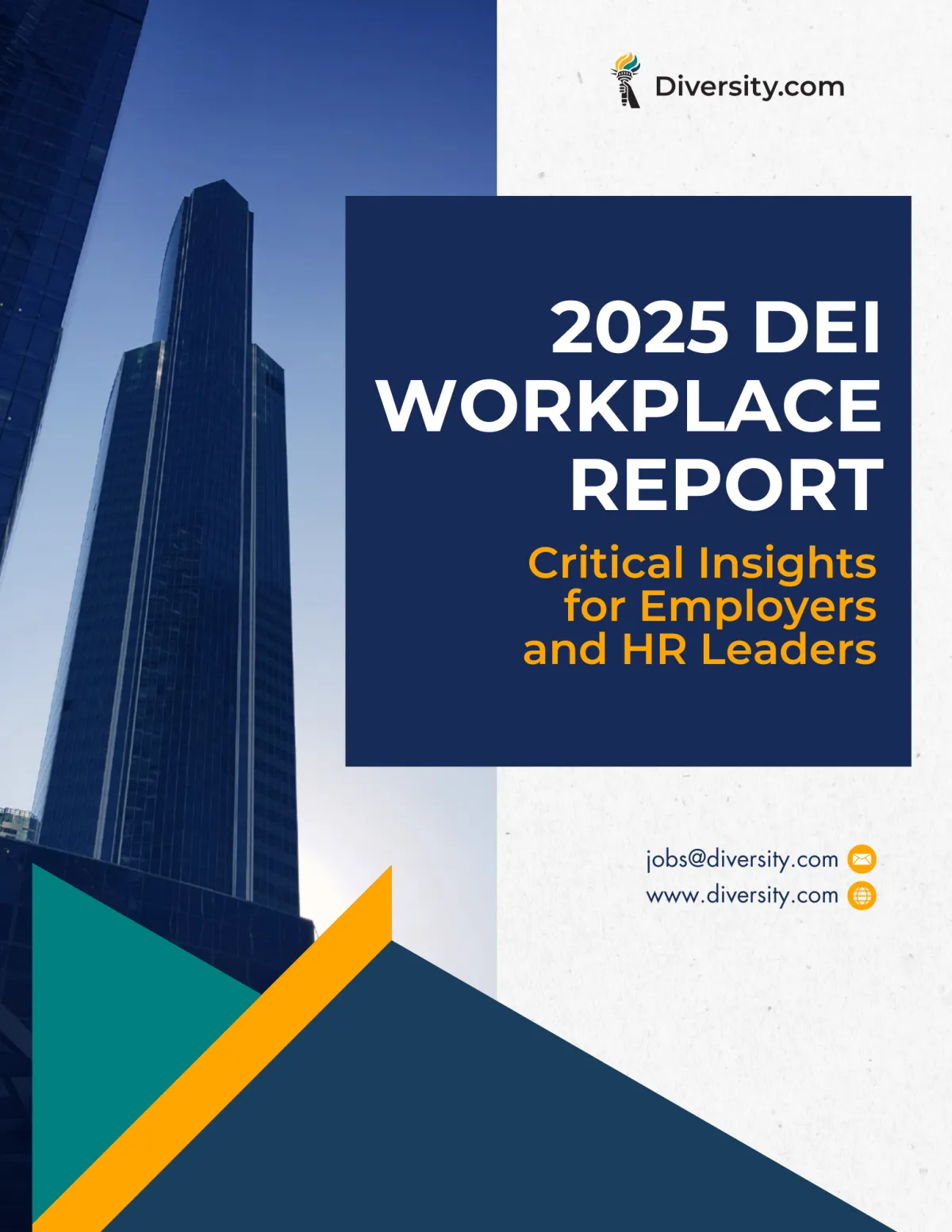
Generational Bias: Why the Youngest and Oldest Workers Face the Most Discrimination
Bias doesn’t always come down to race or gender. Sometimes, it comes down to the date on your resume.
According to Diversity.com’s 2025 Workplace Discrimination Report, the two age groups most likely to report discrimination are:
Workers under 25
Workers 65 and older
That’s not a coincidence. It reflects a deeper generational divide—one that’s still shaping hiring, collaboration, promotion, and perception across industries.
How Generational Stereotypes Play Out at Work
Younger and older workers often face unfair assumptions:
Gen Z (<25): Labeled as lazy, entitled, “job hoppers”
Boomers (65+): Seen as outdated, resistant to change, or close to retirement
Pew Research has found that these stereotypes persist across industries, with young professionals seen as less reliable and older workers viewed as less adaptable (Pew Research Center, 2023).
In reality, both groups offer unique strengths: energy, digital fluency, and creativity on one end—and experience, institutional knowledge, and calm under pressure on the other.
But without intention, workplace culture tends to sideline both.
🎯 Diversity.com’s 2025 data showed that workers under 25 and over 65 were most likely to feel excluded or undervalued by their managers.
What Discrimination Looks Like by Age Group
For Gen Z workers:
Dismissive comments about work ethic or “commitment”
Lower access to high-impact projects
Minimal mentorship and feedback loops
For older professionals:
Passed over for digital transformation roles
Limited investment in training or upskilling
Assumptions that retirement is imminent
These biases create a cycle of exclusion, where age becomes shorthand for capability—and that affects retention, morale, and productivity.
The Data Behind the Divide
AARP’s latest workplace report found that nearly 80% of workers aged 50+ have experienced or witnessed age bias on the job (AARP, 2024).
At the same time, Deloitte’s multigenerational workplace study showed that Gen Z workers feel less psychologically safe and more hesitant to speak up in meetings (Deloitte, 2023).
Neither group is being fully heard. And when employees feel underestimated due to age, they either disengage or leave.
What Leaders Can Do to Bridge the Gap
1. Normalize reverse mentoring
Encourage Gen Z employees to teach new tools or trends to senior colleagues. It builds trust, not tension.
2. Upskill across all ages
Don’t assume older workers don’t want training. Offer learning opportunities that span roles and generations.
3. Audit feedback bias
Are performance reviews skewed by age-related assumptions? Look at patterns in scoring and promotion rates.
4. Redesign onboarding and exit interviews
Dig into generational trends in attrition and engagement. Ask why people stay—or why they don’t.
The Bottom Line
Age bias still shapes how people are seen and supported at work. From stereotypes to missed opportunities, generational exclusion affects how we collaborate, promote, and lead.
If your workplace wants to retain talent across age groups, it starts with unlearning outdated assumptions and designing systems that value all contributions: whether someone just joined or is nearing retirement.
See how this shows up in real employee data. Download the full 2025 Workplace Discrimination Report.
Build Inclusive, Equitable, and Safer Workplaces with Diversity.com
At Diversity.com, we help employers and job seekers connect through inclusive job postings, flexible job packages, and trusted DEI resources.
Whether you're improving your company’s workplace culture or exploring roles where your voice matters, we’re here to support you.
Looking for data to guide your strategy? Choose a report below:
Download the 2025 DEI Workplace Report – Gain insights into diversity, equity, and inclusion trends across multiple industries.
Download the 2025 Workplace Discrimination Report – Explore in-depth findings on bias, exclusion, and psychological safety in today’s workplace.
For Employers & HR Professionals:
✔ Choose a DEI Job Posting Package – Connect with underrepresented talent using flexible, targeted options.
✔ Access DEI Insights & Reports — Browse practical guides, data-backed articles, and expert wisdom to strengthen your inclusive hiring.
✔ Join Our LinkedIn Community — Collaborate with HR and DEI professionals on hiring trends and best practices.
For Job Seekers:
✔ Find Diversity and Inclusion Jobs — Discover meaningful roles at companies that champion equity and representation.
✔ Create a free job seeker account — Apply confidently for jobs with companies that believe in equity.
✔ Read Our Latest DEI Articles — Stay informed with expert-backed insights on workplace inclusion, safety, and growth.
Every hire and every voice helps shape the future of work.
Get started with Diversity.com.
Have questions? Reach out to our team. We're here to support you.
Related Articles
Types of Workplace Discrimination: What Employees Report Most
Do Employees Feel Heard? What the Data Says About Belonging in 2025
Intersectionality at Work: Why Overlapping Identities Matter in DEI Strategy
When Will Diversity Affect the Workplace? What to Expect in 2025 and Beyond
Sources & References
AARP. (2024). Age Discrimination and the American Workplace. https://www.aarp.org/work/age-discrimination/info-2024/research-trends.html
Deloitte. (2023). Multigenerational Workforce Insights Report. https://www2.deloitte.com/us/en/pages/about-deloitte/articles/multigenerational-workforce-report.html
Pew Research Center. (2023). Generational Views on Work and Values. https://www.pewresearch.org/social-trends/generational-divide-in-the-workplace/
Diversity.com. (2025). Workplace Discrimination Report.

